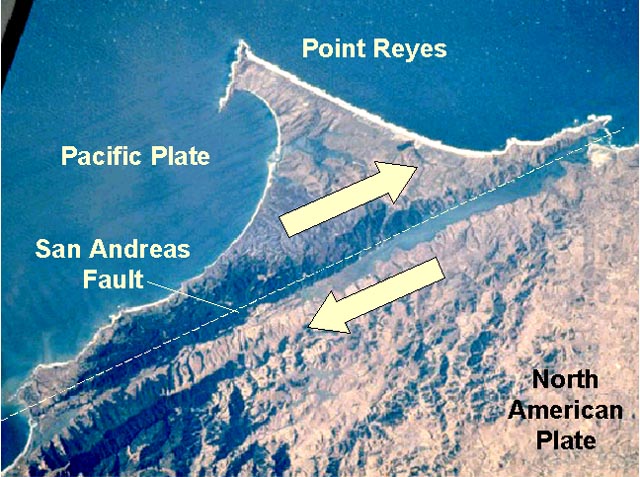
Principles of Plate Tectonics (Part 2)
Plate Boundaries
• Three types of plate boundaries exist. Where plates move away from each other, the boundary is divergent. Where they move toward each other, the boundary is convergent. Where they slide past each other, the boundary is a transform boundary.
Divergent Plate Boundaries
Divergent boundaries can be mid-ocean ridges or continental rift valleys. At these boundaries, two neighboring plates move away from each other. Continental rift valleys are characterized by normal faulting and basalt-rich volcanoes.

The diagram shows a typical continental rift. Note the central rift valley that includes volcanoes. In oceanic rifts, there is a midocean ridge with a central rift valley, volcanoes, and the formation of new ocean crust. (Diagram by Phyllis Newbill)
Convergent Plate Boundaries
Convergent boundaries form where two plates collide. These boundaries often form major mountain chains. These boundaries are identified by their high mountains, volcanic island arc chains, and deep earthquakes.

An ocean plate converges with a continental plate. The collision of the plates causes subduction and destruction of the ocean plate. Note the formation of a trench at the plate boundary and a line of volcanoes called an "island arc". (Diagram by Phyllis Newbill)
In the diagram above, the ocean lithosphere subducts underneath the continental lithosphere. This results in the destruction of the ocean lithosphere and the formation of magmas (with island arc volcanoes above). The deep ocean trench marks the plate boundary and is where the subduction of the ocean lithosphere begins. Earthquakes can occur in the trench (where they can cause tsunamis) and all along the subduction zone.
Transform Plate Boundaries
Transform boundaries form where two plates slide past each other. These boundaries are characterized by shallow earthquakes. This satellite photograph shows Point Reyes, California, and the San Andreas Fault. Here the Pacific Plate is sliding past the North American Plate.

The San Andreas Fault, an example of a transform fault, where two plates slide past each other. Numerous earthquakes occur along the San Andreas Fault, which passes through highly populated areas of California. (Photograph courtesy of NASA)